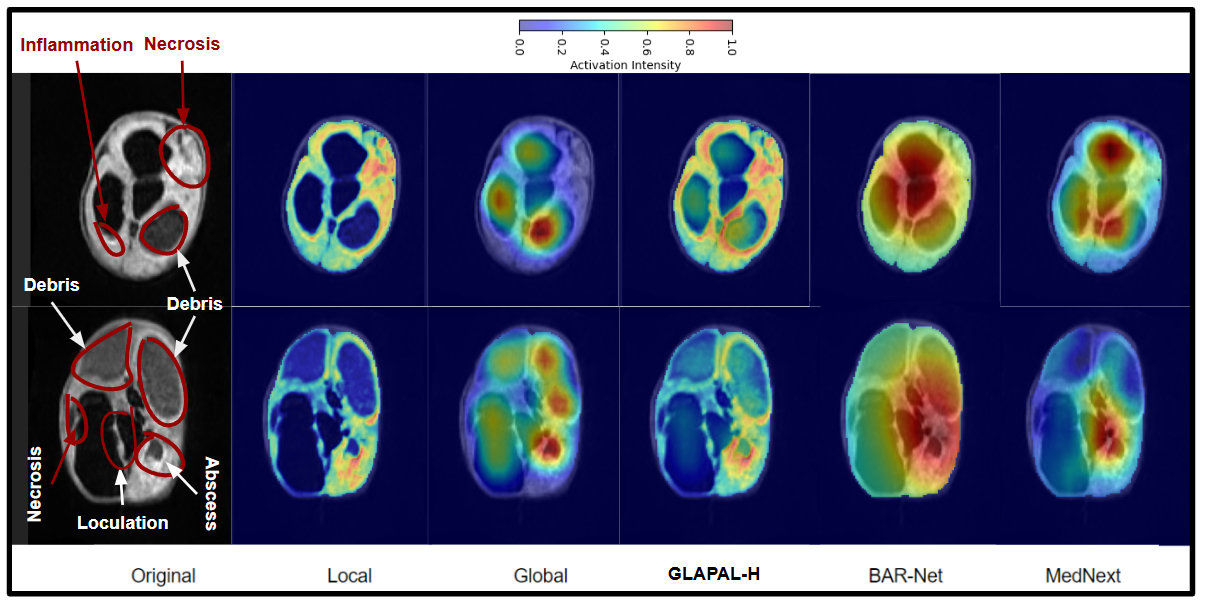Hydrocephalus, marked by abnormal cerebrospinal fluid (CSF) accumulation, poses a global pediatric neurosurgical challenge,
especially post-infectious hydrocephalus (PIH) in sub-Saharan Africa, which accounts for over 50% of cases, while non-post-infectious
hydrocephalus (NPIH) stems from causes such ashemorrhage or congenital malformations; accurate differentiation among healthy, PIH, and
NPIH infants is vital for effective management, as surgery may need to be deferred in active infections. While CT scans expose infants
to ionizing radiation, low-field MRI offers a safer alternative, particularly in resource-constrained settings. However, the lower
resolution of low-field MRI presents challenges for accurate diagnosis. To address the challenges of using low-field MRI for diagnosis,
the study develops a custom approach that captures hydrocephalic etiology while simultaneously addressing quality issues encountered in
low-field MRI. Specifically, we propose GLAPAL-H, a Global, Local, And Parts Aware Learner, which develops a multi-task architecture
with global, local, and parts segmentation branches. The architecture segments images into brain tissue and CSF while using a shallow CNN for
local feature extraction and develops a parallel deep CNN branch for global feature extraction. Three regularized training loss functions are
developed — one for each of the global, local, and parts components. The global regularizer captures holistic features, the local focuses on
fine details, and the parts regularizer learns soft segmentation masks that enable local features to capture hydrocephalic etiology.
The study's results show that GLAPAL-H outperforms state-of-the-art alternatives, including CT-based approaches, for both Two-Class (PIH vs. NPIH)
and Three-Class (PIH vs. NPIH vs. Healthy) classification tasks in accuracy, interpretability, and generalizability. GLAPAL-H highlights the potential
of low-field MRI as a safer, low-cost alternative to CT imaging for pediatric hydrocephalus infection diagnosis and management. Practically,
GLAPAL-H demonstrates robustness against the quantity and quality of training imagery, enhancing its deployability. It further demonstrates
computational efficiency, achieving reduced training times and low inference latency due to its etiology-guided learning design, making it
suitable for rapid, scalable deployment in low-resource settings. We introduce the first domain-enriched AI approach for diagnosing infections in
pediatric hydrocephalus using low-field MRI, a safer and 10 timesmore affordable alternative to CT scans, which pose radiation risks in children.



